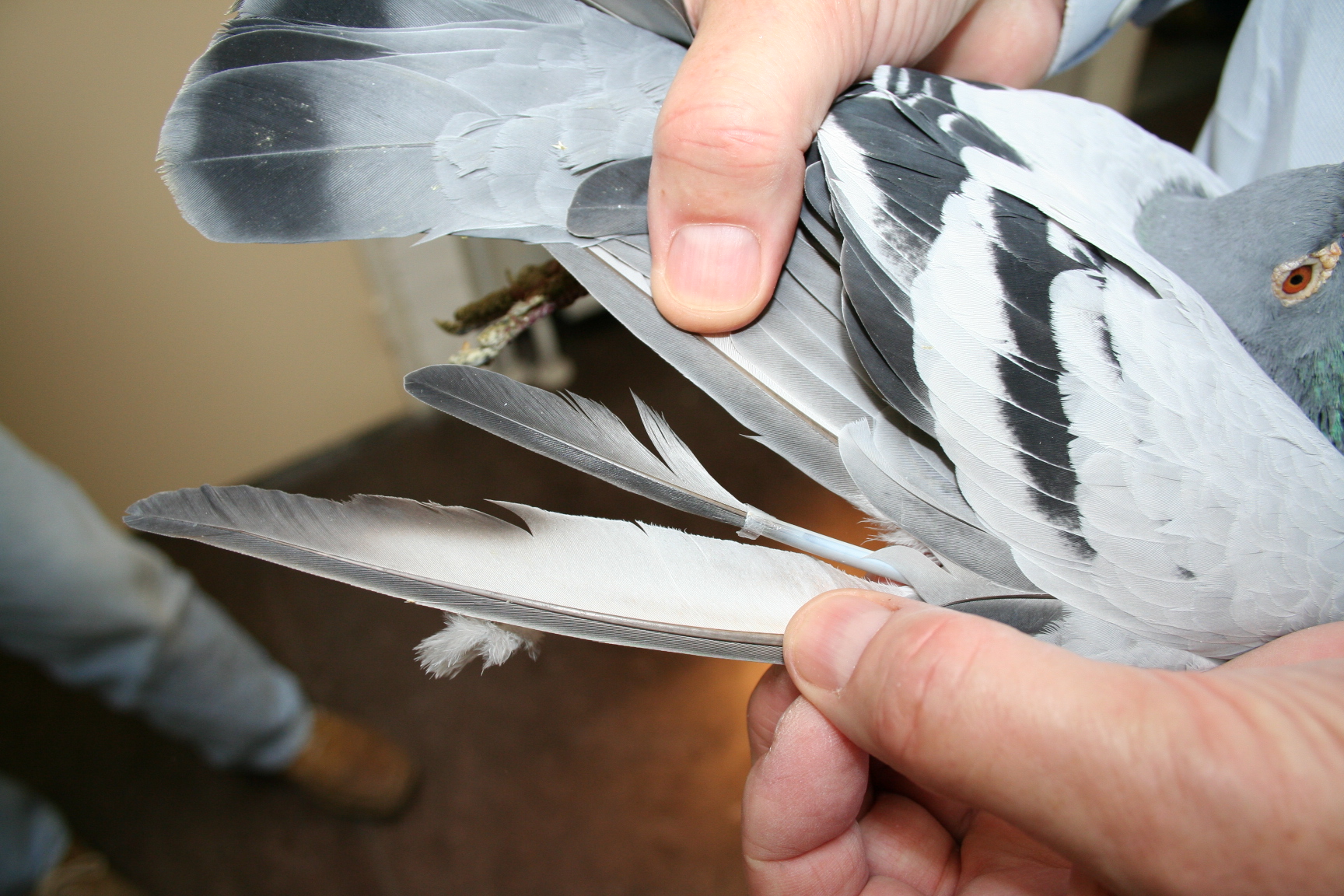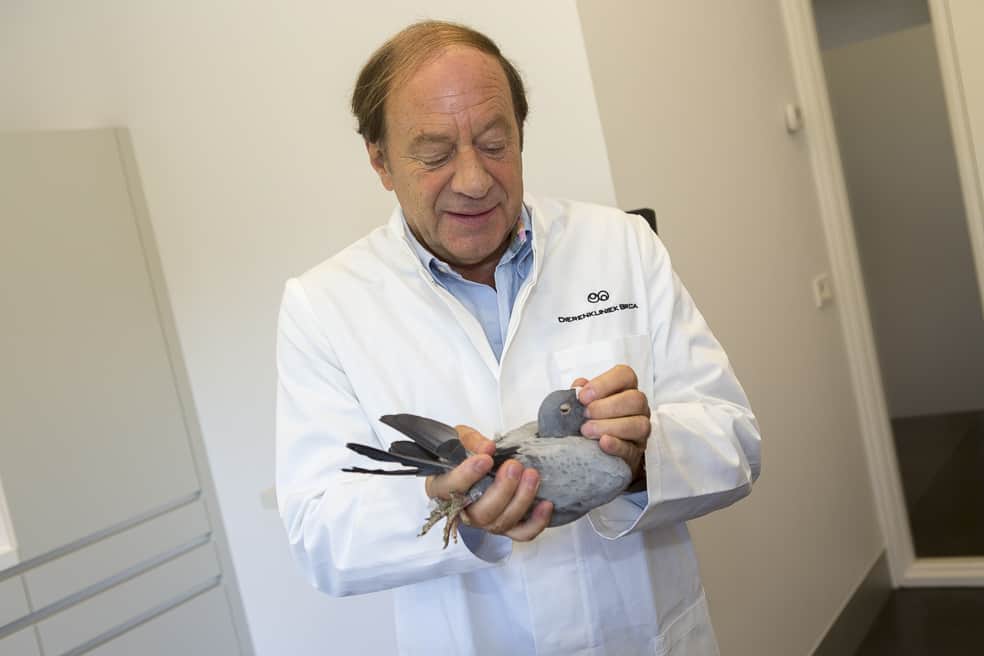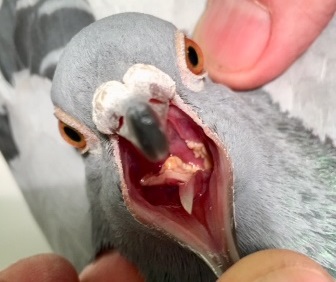

Knowledge and practice
Every day, we receive phone calls and emails, sometimes with photos and/or short films, about pigeon problems from around the world. Via WhatsApp, as well, we can quickly assess situations and sometimes establish diagnoses. In the past, when we only had the telephone, it was sometimes more difficult and we had to continue asking question; but long live modern technology with ever better and faster communication via the internet – all of this also represents tremendous advances for doctors and specialists.
Regarding diagnostics, too, we see the possibilities improving rapidly; but this does not always make things easier. Dear reader, I will give you some examples.
Through innovations in the field of laboratory testing, we increasingly obtain quantitative results instead of old-fashioned qualitative ones. That means that we increasingly see a number instead of the tried-and-true positive or negative or demonstrated or not demonstrated.
Ct-value
The reported number can be as well a: 1. Ct value, as: 2. the amount of bacteria or virus per gram of examined (diseased) material.
The Ct value is a measure of the amount of genetic material of the pathogen sought (bacteria or virus causing the illness). And there we have it. It involves the amount of bacteria or virus per gram of examined (diseased) material and the Ct value. This means that the ‘old’ principle of positive versus negative now paints a different picture of the health situation of, in our case, the pigeon. Basically it comes down to the fact that in our racing pigeons you can demonstrate almost all potential pathogens WITHOUT the pigeons being sick, as long as these are at a low level and as long as the pigeon lives with this in a kind of equilibrium (balance).
We call this ‘latent presence’. Nothing new for us pigeon vets, since we have known for years that all these well-intended laboratory results must be assessed with a certain degree of ‘healthy’ scepticism!
I am referring, for example, to all kinds of causative agents of ornithosis complex, such as Chlamydia, mycoplasma, Staphylococcus, Streptococcus, E. coli bacteria and Pelistega europeae etc. and herpes viruses (type I).
I already wrote about this years ago, by the way, as well as about the many different strains of the E. coli bacterium, for me still the most important pathogen (cause) of the so-called ‘Adeno-coli’ syndrome. This term was established in the seventies by my good and extremely knowledgeable colleague and friend Dr. Pol Lemahieu and myself. What matters is the correct interpretation of the findings, a sum of the clinical diagnostics (i.e. the symptoms), whether or not combined with laboratory results and preferably according to the latest techniques (PCR) insofar as possible.
Paratyphoid
I dare say that nearly every loft in Europe with more than 150-200 pigeons has Salmonella, usually without symptoms.
Rarely a problem in summer, it is not the cause of poor performance, generally speaking, because that is of course ‘dry snot’, but those Salmonella bacteria can ‘wake up’ somewhere in the body, usually the genitals or bowel, and start to multiply and then cause symptoms and indeed result in problems! I almost always see 100 cases between mid-September and mid-March, for example, and 1 or 2 between mid-March and mid-September. Yes, 1.5%; and this has everything to do with moulting and the weather being colder and wetter.
Our pigeon clinic is currently 75% full with paratyphoid patients! All top pigeons where the owners expect the best possible treatment so that they can be used again for breeding and sometimes even for races!
The symptoms vary from loft to loft, but very often we see a lot of pigeons becoming thin, keeping their old down, limping, flying awkwardly and/or with striking frequency blood feathers/pin feathers, especially the 7th, 8th or 9th pin!

We treat those pigeons with the right means, preferably with several antibiotics and not just one. Unfortunately, sensitivity tests are not always reliable, and vaccination does not do wonders either, or at least it does not do what you might expect from a vaccination!
In my opinion, the diagnosis of paratyphoid can indeed most reliably be made on the basis of clinical symptoms. But you have to have a great deal of experience, in other words, you have to have seen a huge number of cases. Because no single drug is 100% effective against it, Salmonella remains a challenging disease.
It depends to some extent on the pigeon itself: so it must be optimally housed, the loft kept slightly warmer than outside, dry, light, and clean and with not too many pigeons together. A matter of lowering the potential risk of infection; but of course this applies for all diseases.
Though we regularly test new medicines, for example such as apramycin from the poultry sector, unfortunately the results are no better than with our ‘old’ combinations.
It is best to use a syringe/tube to treat sick pigeons. We administer approx. 12 ml of the prepared product into the mouth twice a day!
Trichomonas
Interestingly, we have seen old-fashioned trichomonas again in the last few years, including in show pigeons. We already saw a lung this year that was completely compromised by trichomonas. We also saw skull base trichomonas, the process breaking through from the throat to the skull base. And we have seen serious navel infections in young pigeons in the nest, the so-called ‘stone’ that older fanciers will remember! But this can be cured without problems!
This week there was a show pigeon fancier with 20 dead pigeons, young and old. On his video I saw pigeons with a lot of mucus and yellow lumps in the throat! Classic trichomonas! In these cases, treatment with tablets and an oral solution works quickly and effectively!!
In one case we also identified liver trichomoniasis.
Trichomoniase
Candida albicans
You see the so-called fungal infection with Candida albicans every now and then in a head/throat smear. We attach little importance to this, because there is rarely a real infection; usually it is just loosely on the mucous membranes and disappears within a few days.
If there is really an infection with symptoms, yes, then of course treat it with, for example, nystatin (which, incidentally, also has an antibiotic effect).
I think this year we found five cases of fungus problems. One of them was aspergillosis, where the pigeon experiences respiratory difficulties and dies.
Adeno-coli
Finally, do you remember that a number of pigeon colleagues became quite nervous at the time (approx. 12 years ago) when they discovered circovirus in our feathered friends? This seemed to be the cause of ‘Adeno-coli’. There were lengthy discussions, even in the FCI veterinary committee. From the very beginning I had my own ideas about that, because I didn’t see any new disease appearing at all and we could usually cure the ‘Adeno-coli’ quickly! Here too, it turned out afterwards that the circovirus is simply common in many healthy youngsters, without problems, in the so-called bursa of Fabricius (a type of thymus in calves) and that Bursa disappears after about 6 months. Nobody talks about circoviruses anymore.
BELGICA DE WEERD B.V. I Postbus 4607 I 4803 EP Breda I The Netherlands
T +31 76 560 02 22 I F +31 76 565 35 70 I info@belgicadeweerd.com I www.belgicadeweerd.com


